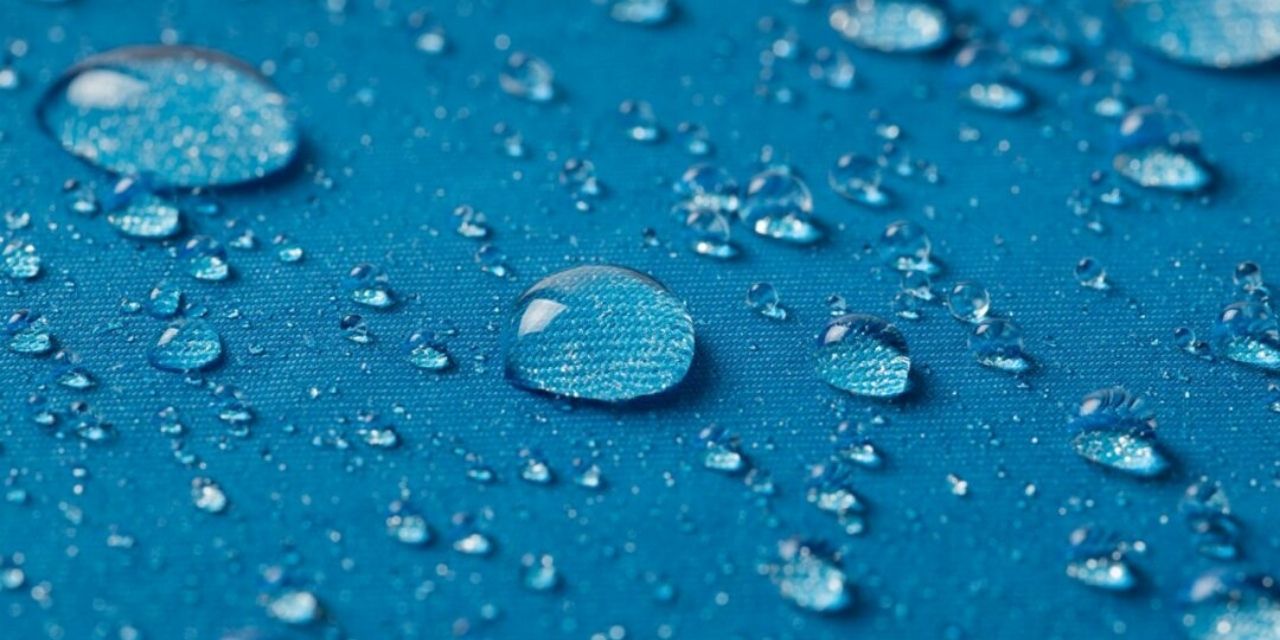
Saee Sasalate
Sem 5, B. Des (Textile Product Design)
Amity School of Fashion Technology
Amity University Mumbai
The textile industry is constantly evolving, blending innovative science with creative design to make clothing more functional, efficient, and sustainable. As environmental concerns grow, industry has been shifting toward greener practices, looking for new ways to reduce waste and pollution. Plasma technology is one of these exciting innovations, offering a way to change the properties of the fabric, making it water-resistant or flame-retardant without relying on harmful chemicals or excessive water use. This technology is a game-changer, especially for manufacturers trying to meet both performance and environmental goals. A particular area of plasma technology, known as spray technology, has been especially impactful. Spray technology allows companies to coat fabrics with high-performance finishes more sustainably and affordably than traditional methods. Think of it as a high-tech “spray-on” that can add a variety of benefits to fabrics-like repelling water or fighting off bacteria without altering their comfort or appearance. This opens exciting new possibilities, making it easier to design fabrics that are as practical as they are beautiful. One of the most stunning examples of spray technology in action was seen on the runway, where model Bella Hadid wore a spray-on dress created live in front of the audience. This moment was more than just a fashion statement, it was a glimpse into the future of clothing. It showed how spray technology can bring fashion and science together to create unique, customizable, and eco-friendly clothing right on the spot. In this report, we’ll dive into the latest advances in plasma technology in textiles, focusing specifically on spray technology and its range of applications. Finally, we’ll look closer at Bella Hadid’s spray-on dress to see how this fascinating approach is setting a new standard for what fashion can be.
Plasma Technology in Textiles:
Plasma technology is a modern technique that allows us to change the surface of textiles without using water or chemicals, making it much more eco-friendly than traditional methods. This technology works by creating a special state of matter “plasma” that can alter a fabric’s surface properties, like how it feels or how it interacts with other materials. Think of it as giving fabrics a high-tech makeover without the usual environmental cost. There are a couple of main types of plasma technology used in textiles: Cold Plasma- this form operates at low temperatures, which makes it perfect for treating fabrics without damaging them. It can add certain qualities to the fabric, like making it more absorbent or ready to bond with other materials Atmospheric Plasma- this type works under regular air pressure, making it easier to use on a large scale, like in factories where fabrics are treated in bulk. The benefits of plasma technology in textiles are impressive. It enhances how well fabrics absorb dyes, improves water resistance, and even makes them more durable. Since this process doesn’t rely on traditional chemicals or large amounts of water, it significantly reduces environmental impact. By saving both energy and resources, plasma technology offers a sustainable way forward for the textile industry, aligning it more closely with eco-friendly production standards while adding new functionality to fabrics.
Spray on Technology in Textiles:
Spray technology is a fascinating part of plasma technology that takes fabric treatment to the next level. In simple terms, it involves spraying a specialised coating onto the surface of textiles, often using plasma to help the coating bond with the fabric. This process allows manufacturers to apply different kinds of finishes, like water resistance or antibacterial properties, in a way that’s both effective and environmentally friendly. With plasma-spray technology, a fine mist of functional particles is sprayed onto the fabric, and the plasma helps these particles stick, creating a uniform coating. The beauty of this technique is that it allows us to add useful qualities to the fabric without affecting its comfort or look.
Here are some of the ways plasma-spray technology is transforming textiles:
Waterproofing and Stain Resistance: By applying a hydrophobic (water-repellent) coating, spray technology makes fabrics resistant to both water and stains. This is ideal for outdoor gear, upholstery, and other products where durability against the elements is essential.
Antimicrobial Finishes: For healthcare and hygiene products, plasma-spray technology can add an antimicrobial layer to fabrics, helping to reduce the spread of bacteria and maintain cleaner surfaces over time.
Fire Retardant Coatings: This technology can also enhance fire resistance, which is crucial for protective wear and household items. Unlike traditional methods, this can be done without the need for harsh chemicals, making it safer and more eco-friendly.
Enhanced Durability and Comfort: Plasma spray can modify the surface of fabrics to make them softer, more breathable, or more durable. This means you get a fabric that feels good and lasts longer, which is valuable for everything from clothing to upholstery. In short, spray technology in textiles is all about adding functionality without compromising on quality. It’s a flexible, sustainable option that meets the demands of modern consumers and industries alike.
Case Study: Bella Hadid’s Spray-On Dress at the Coperni Fashion Show, one of the most memorable moments in recent fashion took place when Bella Hadid walked down the runway in a dress that was created on her body right before the audience’s eyes. This live demonstration wasn’t just a visual spectacle; it was a groundbreaking blend of fashion and technology. The dress, sprayed directly onto Hadid, showcased a whole new way to think about clothing, sparking conversations about sustainability, wearable technology, and the future of fashion itself.
The technology behind the dress: This jaw-dropping display was made possible by “Fabrican Technology”, a unique invention by scientist and designer Manel Torres. Fabrican is a special sprayable liquid that contains tiny fibres mixed with polymers and other materials. When sprayed, these fibres instantly cling to the surface and bind together, creating a soft, wearable fabric. As the liquid solidifies on contact, it forms a seamless garment that can be peeled off or adjusted. In Bella Hadid’s case, the spray was skillfully applied to her skin, forming a sleek, perfectly fitted dress that seemed to appear like magic. Once dry, the dress acted just like any other piece of clothing, allowing her to move freely and comfortably.
Materials and Innovation: The spray used in Fabrican technology combines polymers and bio-based materials, making the fabric soft, durable, and flexible. But what’s even more impressive is its potential for sustainability. The fabric can be removed, re-sprayed, or even recycled, offering a new way to create clothing with minimal waste. Unlike traditional garment production, which often leads to large amounts of leftover material, this spray-on method only uses what’s needed, making it an efficient and eco-friendly alternative.
Implications for the Fashion and Textile Industry
Bella Hadid’s spray-on dress wasn’t just a striking fashion statement, it was a hint at what the future of clothing could look like. This on-demand approach to clothing production eliminates the fabric waste that typically comes with traditional manufacturing. Imagine having an outfit created just for you, in real-time, that fits perfectly and uses only the materials required. It also opened conversations about wearable tech and whether this type of innovation could change how we produce, customise, and think about clothing altogether. Bella Hadid’s spray-on dress was a powerful example of how technology can redefine fashion by making it more sustainable, flexible, and exciting. This single dress not only captivated the audience but also suggested a future where clothing can be created on the spot, with little waste, and a focus on environmental responsibility.
Environmental Impact and Future Outlook
The rise of plasma technology in textiles brings some exciting environmental benefits that can truly help reshape the industry for the better. One of the standout advantages is the significant reduction in water usage during fabric treatments. Traditional textile manufacturing processes often consume enormous amounts of water for dyeing and finishing, leading to water scarcity and pollution. In contrast, plasma treatments require minimal or even no water at all. This not only helps conserve this precious resource but also reduces the burden on wastewater systems, making the process much more sustainable.
Another major benefit is the minimization of chemical waste. Unlike conventional methods that rely heavily on harmful chemicals, plasma technology alters the fabric at a molecular level without needing those substances. This results in a cleaner production process, generating far fewer hazardous byproducts and contributing to a healthier environment.
Perhaps one of the most promising aspects of plasma technology is its potential to combat the waste often associated with fast fashion. By enabling on-demand, recyclable clothing solutions, the industry can move away from the mass production model that typically results in excess waste. Instead of producing huge quantities of clothing that might never be sold or end up in landfills, plasma technology allows for garments to be created as needed. This shift can significantly reduce the overall footprint of the fashion industry.
Future Prospects
Looking to the future, the possibilities for plasma technology in textiles are truly exciting. There are great opportunities for advancements in various areas, such as medical textiles, protective clothing, and other high-performance applications. For example, plasma-treated fabrics can be designed for specific medical uses, like creating antimicrobial surfaces for healthcare settings, or for durable materials needed in protective gear that must balance comfort and safety.
The integration of plasma technology with other emerging fields, such as nanotechnology, also opens new avenues for innovation. Combining these technologies could lead to even more advanced textile treatments, providing benefits like enhanced UV protection or improved thermal regulation in fabrics.
Another fascinating prospect is the potential for consumer-grade customization. Imagine being able to design or modify your own clothing at home using simple spray technology. This could revolutionise how we think about fashion, allowing individuals to create personalised pieces that fit their style and needs, all while minimising waste. This shift towards customization could also encourage people to develop a deeper connection with their clothing, fostering more thoughtful consumption habits.
In summary, the environmental impact of plasma technology in textiles is significant, promoting sustainable practices while paving the way for innovative applications. As the industry continues to evolve, the integration of advanced technologies and a focus on personalization could transform the way we produce, wear, and think about fashion, leading us to a more sustainable and exciting future.
Conclusion
In wrapping up, it’s clear that plasma and spray technologies are truly changing the game in the textile industry. They offer fresh, innovative, and sustainable solutions that have the power to transform how we create and engage with fabrics. By significantly cutting down on water use, minimising chemical waste, and enabling on-demand production, these technologies are setting a new standard for environmentally friendly fashion. The chance to customise clothing and produce it right when we need it not only helps tackle the waste often linked with fast fashion but also opens the door to exciting new ways for people to express their personal style.
The unforgettable moment at the Coperni fashion show, where Bella Hadid did a remarkable spray-on dress, perfectly illustrates how these advancements can reshape the fashion landscape. This live demonstration highlighted the potential for a future where clothing is not just stunning and functional but also flexible and environmentally conscious. As the textile industry continues to embrace these innovative technologies, we can look forward to a future that prioritises sustainability and customization, allowing us to enjoy garments that are thoughtfully created and tailored to meet our unique needs.
References:
https://www.fibre2fashion.com/industry-article/1798/use-of-plasma-technology-in-textiles
Choudhary U, Dey E, Bhattacharyya R and Ghosh SK. A Brief Review on Plasma Treatment of Textile Materials. Adv Res Text Eng. 2018; 3(1): 1019.
https://www.textilesphere.com/2019/08/plasma-technolgy-in-textiles.html

